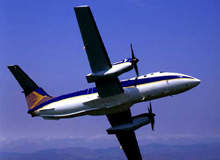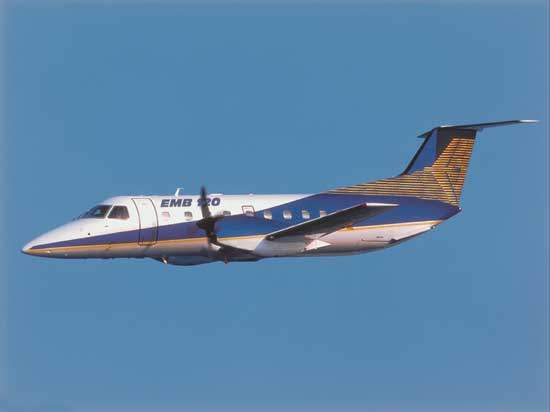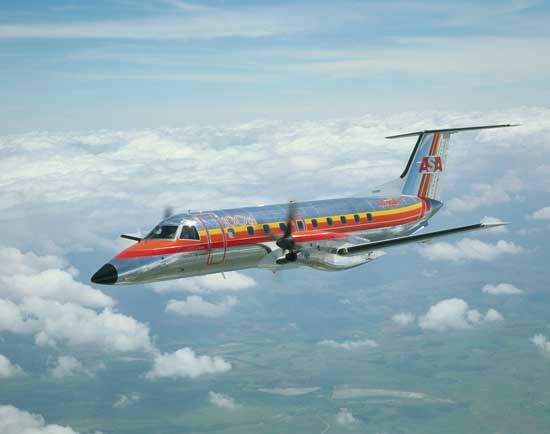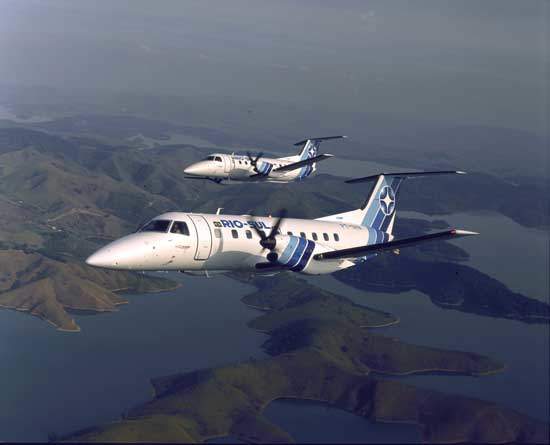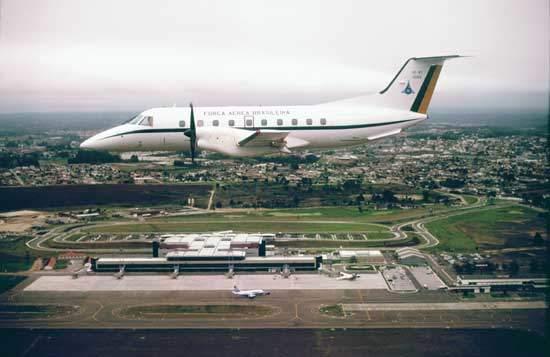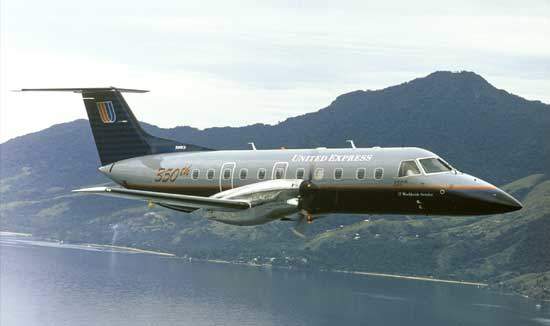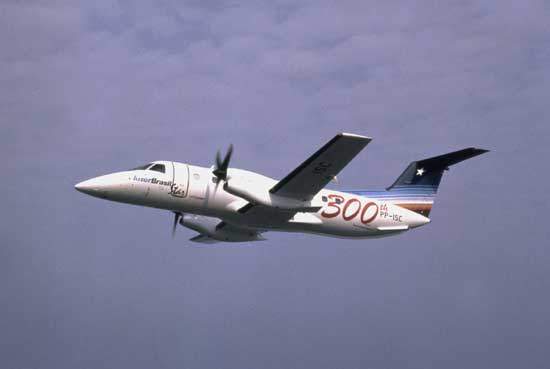The EMB-120 Brasilia is Embraer’s 30-seat twin-turboprop airliner.
Embraer (Embresa Brasileira de Aeronautica S.A.) has its headquarters in Sao Jose dos Campos, Sao Paulo, Brazil. The EMB-120 first entered service in 1985 with Atlantic Southeast Airlines. In 1991, Embraer announced the Improved Brasilia extended range version – the EMB-120ER – first delivered in 1993. The extended range aircraft includes several features such as an increased take-off weight and improved design of all the leading edges. The ER version has been adopted as the standard production model since 1993.
Over 370 aircraft have been delivered and are in service with 32 operators worldwide. Major sales were in the USA to Atlantic Southeast Airlines (62 aircraft), Comair (40 aircraft), SkyWest (70 aircraft), WestAir (35 aircraft) and Texas Air (34 aircraft).
The aircraft is produced in a 30-seat passenger version, an all-cargo version with a payload capacity of 4,000kg and a VIP transporter. The Brazilian Air Force operates two VC-97s, the VIP transport versions, which are in service with the six Esquadrao de Transporte Area and the Grupo de Transporte Especial based in Brasilia.
DESIGN
The aircraft has a circular cross section fuselage, low mounted straight (not swept) wings and a T-tail. The aircraft is of semi-monocoque design with aluminium alloy skin. The wing structure is a single three-spar fail safe design linked to the frames of the lower side of the fuselage. The nosecone, the dorsal fin, and the leading edges of the wing and tailplane are of Kevlar-reinforced glass fibre.
FLIGHT DECK
The two-pilot flight deck is equipped with a dual digital attitude and heading reference system AHRS-85, dual attitude director with a
three-dimensional cockpit display, a dual electronic horizontal indicator EHSI-74, dual radio magnetic indicators RMI-36 and a JET altitude indicator. The aircraft’s digital avionics system is a Rockwell Collins Pro Line II.
The navigation systems include dual VHF navigation receivers type VIR-32, an automatic direction finder ADF-60A and a distance measuring equipment DME-41. The aircraft is equipped with a Rockwell Collins WXR-270 weather radar.
The communications suite includes a dual VHF-22 transmit and receive unit and a TDR-90 transponder, a Fairchild cockpit voice recorder and Avtech interphone and announcement systems. The aircraft is also equipped with a Dorne and Margolin emergency location/transmit unit type DMELT-81. Selective calling and an additional VHF communication set and transponder are available as an
option.
CABIN
The main cabin is 9.38m long and 2.10m wide. In a three abreast seating configuration, it can accommodate one cabin crew member and 30 passengers. The cabin is conditioned with a Honeywell air conditioning and pressurisation system.
ENGINES
The turboprop engines, Pratt & Whitney PW118 or 118A, each provide 1,800 standard horsepower. The engine air intakes are fitted with an air bleed de-icing system. The engines drive Hamilton Sundstrand type 14RF-9 four-bladed constant-speed, reversible pitch, autofeathering propellers. The propellers are of aluminium spar and glass fibre blade construction.
The two integral fuel tanks have a fuel capacity of 3,340l. The fuel system is fitted with a single pressure refuelling point beneath the starboard wing plus a gravity refuelling point in the upper surface of each wing,
PERFORMANCE
The EMB-120 flies at a maximum altitude of 9,750m (30,000ft). Maximum cruise speed is 606km/h (298 knots) and the aircraft has a range of 3,017km.
LANDING GEAR
The EMB-120 Brasilia has hydraulically operated retractable tricycle type landing gear. The Goodrich twin wheels are fitted with Goodrich carbon or steel brakes, oleo-pneumatic shock absorbers and a Hydro Aire anti-skid system.

